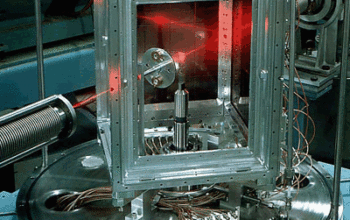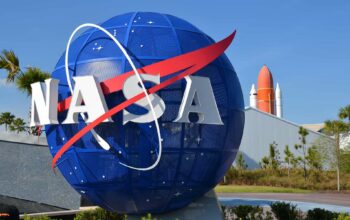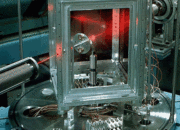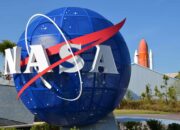In recent years, the notion of “Fusion in a Bubble” has stirred a pot of debate that transcends the boundaries of scientific inquiry, finding traction in sociocultural contexts and popular discourse. This phrase, both vivid and enigmatic, conjures images of an idealized, controlled environment where disparate elements coalesce to generate a formidable energy source. At the intersection of science, technology, and human experience lies a metaphorical bubble that encapsulates the various dimensions of fusion: nuclear fusion in the realm of astrophysics and the social fusion of ideas, identities, and beliefs.
The concept of fusion itself, particularly in the scientific arena, refers to the process whereby atomic nuclei combine to form a heavier nucleus, a phenomenon that releases an extraordinary amount of energy. This fundamental process empowers stars, serves as the ignition mechanism for hydrogen bombs, and represents the holy grail for physicists seeking sustainable energy solutions on Earth. Yet, as researchers delve deeper into the mechanics of fusion, they simultaneously orbit around the unresolved paradoxes suffusing the field. The allegorical “bubble” serves as both a protective shell and a limiting factor, imbuing the conversation with an intrinsic tension. Critical analysis of this tension reveals the implications surrounding the technological, ethical, and societal ramifications of fusion’s potential.
The allure of controlled nuclear fusion has engendered optimism for future energy solutions that promise minimal environmental impact and abundant supply. Unlike traditional fossil fuels, nuclear fusion holds the promise of utilizing isotopes such as deuterium and tritium, which can be derived from seawater and lithium. However, achieving sustained fusion reactions necessitates extreme conditions, including temperatures exceeding millions of degrees Celsius. Consequently, scientists persistently grapple with the engineering hurdles of containment and stability. Theoretical models advocate for the development of magnetic confinement systems—like tokamaks and stellarators—that bear resemblances to fantastical bubbles encapsulating the ferocious energy within. Yet, these very bubbles are fraught with fragility and complexity. The stunning elegance of such systems often belies the profound challenges faced in translating theory into practice, engendering skepticism and fueling disputes within the scientific community.
Intriguingly, the allure of fusion has sparked not only technical debates but also philosophical and ethical considerations that warrant profound scrutiny. The metaphor of fusion in a bubble extends to include the sociocultural ramifications of scientific progress and innovation. In an age where technological prowess is exalted, it becomes imperative to interrogate the ethical implications surrounding the development and potential deployment of fusion technology. As whispers of game-changing breakthroughs permeate through the corridors of academia and industry, critical voices emerge, questioning the long-term sustainability in the pursuit of energy dominance.
The historical context of scientific advancement illuminates the dichotomy between progress and ethical responsibility. Past technological innovations, heralded with euphoria, often bore unforeseen consequences, as evidenced by the development of atomic weaponry. Herein lies the crux of the controversy surrounding fusion: the potential benefits juxtaposed against the risks of misuse and catastrophic outcomes. Proponents of fusion frequently frame their arguments within the narrative of progress and hope. They contend that harnessing the Sun’s power could usher in an era characterized by energy abundance and climate stability. However, skeptics remain vigilant, arguing that the very technology that has the capacity to save humanity could also be exploited for malevolent purposes. The bubble of fusion, therefore, serves as a poignant reminder of the duality of innovation—pulsing with potential yet restrained by the weighty moral burden that accompanies it.
As this discourse unfolds, the societal fabric begins to reflect the complexities of fusion’s allure. The metaphorical bubble encapsulates the diversity of perspectives, reinforcing the idea that within this enveloping sphere, varied stakeholders confront their values and aspirations. Prominent voices across the environmental spectrum, industry leaders, policymakers, and civil society organizations engage in a tug-of-war between optimism and caution. Each group perceives the potential of controlled fusion through their unique lenses, yielding multifaceted interpretations that often clash. The friction generated by such tensions is reminiscent of the interstellar collisions occurring within the heart of stars—so close yet so distanced, all within an ephemeral bubble.
Furthermore, the burgeoning fields of artificial intelligence and machine learning converge with fusion research, promising to enhance predictive models and optimize experimental approaches, thereby expanding the bubble’s dimensions. However, this intersection raises pertinent questions: Will the intersection of these advanced technologies yield profound advancements or simply yield a more complex array of challenges? The risks of dependency on technological artifacts, whereby humanity seeks to insulate itself from the brute forces of nature, invariably complicate societal dependencies. As such, the conversation concerning fusion evolves beyond the scientific and technical realms, inviting interdisciplinary discourse that interweaves elements of ethics, sociology, and environmental stewardship.
Ultimately, the future trajectory of fusion in a bubble remains uncertain, caught in a liminal space filled with promise and peril. The ever-expanding field of inquiry entwines with the fervent hopes of those yearning for sustainable energy and the stark awareness of unintended consequences that history has repeatedly illuminated. As the bubble of fusion grows, it is incumbent upon society to critically engage with the debates it engenders, striving to nurture a balance that fosters innovation while holding steadfast to ethical imperatives. In this balancing act, the pursuit of knowledge and energy must resonate with an unwavering commitment to accountability and stewardship, ensuring that fusion remains a beacon of hope rather than an object of controversy.








